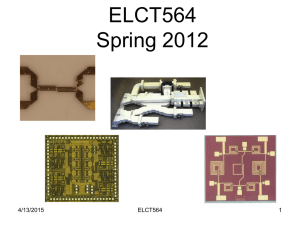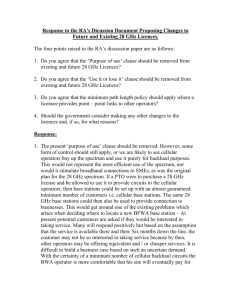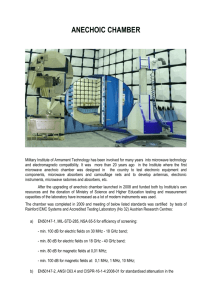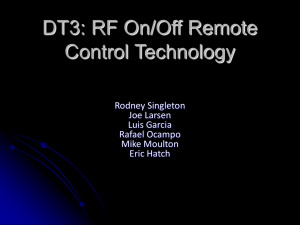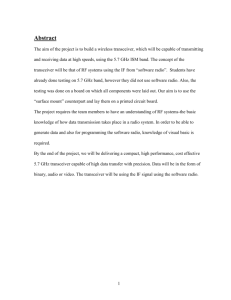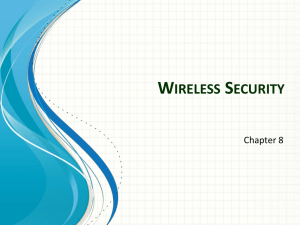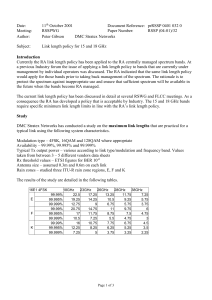Radio Waves - MIT Haystack Observatory
advertisement
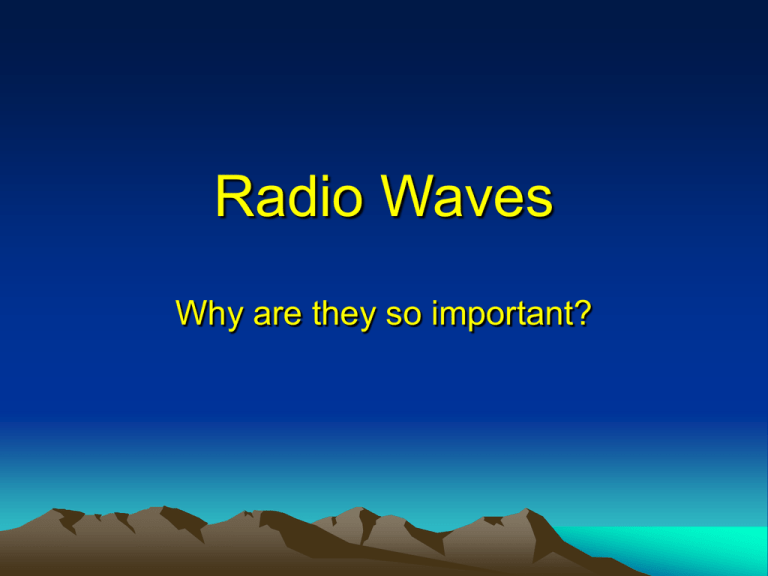
Radio Waves Why are they so important? What is a Radio Wave? • Radio waves are one of many forms of electromagnetic (EM) radiation, or waves • The EM spectrum is divided into bands: Radio Waves, Infrared, Visible, Ultraviolet, X-Rays, and Gamma Rays • Scientists use the terms EM wave and EM radiation interchangeably The Electromagnetic Spectrum • The visible light we see is only a small fraction of the total EM spectrum • Radio waves can be as short as 1 mm or many kilometers long! Image courtesy of NASA The Radio Band • No, not the latest music group from Seattle! • The Radio spectrum has many sub-bands, grouped by frequency Band Frequencies Band Frequencies VLF (Very Low) 10 - 30 kHz VHF (Very High) 30 - 300 MHz LF (Low) 30 - 300 kHz UHF (Ultra High) 300 MHz - 2.9 GHz MF (Medium) 300 kHz - 3 MHz SHF (Super High) 2.9 GHz - 30 GHz HF (High) 3 - 30 MHz EHF (Extremely High) 30 GHz and above Microwave/Radar frequencies Radar Band Frequencies L 1 - 2 GHz S 2 - 4 GHz C 4 - 8 GHz X 8 - 12 GHz Ku 12 - 18 GHz K 18 - 27 GHz Ka 27 - 40 GHz mm (millimeter) 40 - 300 GHz What’s going on in all those bands? • Not all radio waves are the same! • Lower frequencies = longer wavelengths • In the US, the FCC allocates frequencies for specific uses (commercial, military) • Not enough consideration is given to scientific uses and needs!!! The radio spectrum is a busy place! Image courtesy US Department of Commerce / NTIA A close-up around 11 GHz Image courtesy US Department of Commerce / NTIA How do we use radio waves? • • • • • • • Cellular telephones Wireless LANs Keyless entry AM & FM radio Garage-door openers Satellite radio Dog collars • • • • • • Microwave ovens Police radar Radar detectors Doppler radar GPS Satellite tracking & communications Nature is sending us messages • Many natural occurring phenomena can create radio waves (see Radio Sources) • Spectral lines and their intensities identify the source – like celestial fingerprints (who says CSI has all the fun?) • Man-made sources interfere with scientists’ ability to detect natural events Radio Astronomy • Uses Radio Telescopes to watch for radio signals from natural sources • Compare results to other methods of detection (optical, X-Ray, etc) • Form theories about the origins of those sources based on spectral output • Must subtract earth’s atmospheric contamination of incoming signals Atmospheric Sciences • Use the “contamination” that Radio Astronomers throw away to deduce what is happening in our upper atmosphere • Use radar to probe the conditions of the earth’s atmosphere, especially the charged part called the ionosphere • Use transmissions from GPS satellites to measure Total Electron Count (TEC) Geodesy • Use points at the edge of the universe to accurately determine the location of the radio telescopes • The earth isn’t as solid as you think! – Plate tectonics – Orbital precession and wobble – Land tides


